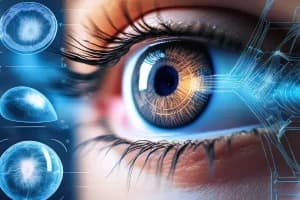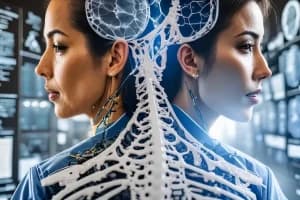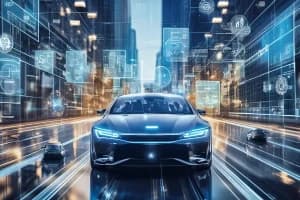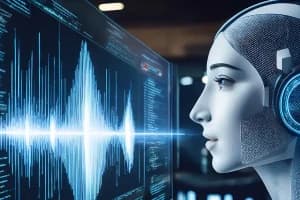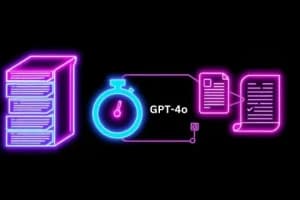What is a self-driving car?
Self-driving cars are also called "driverless" cars since they operate and drive the vehicle using sensors and software. They're the ones in which human drivers are never necessary to take control in order to run the vehicle properly.
Layers of autonomy
Researchers have categorized vehicles into 5 levels according to the capability of different levels of automated driving.
-
Level 0: Humans are in charge of all primary controlling systems. For example, our typical human driving vehicles.
-
Level 1: The car can handle certain systems, such as cruise control or automated braking, one at a time.
-
Level 2: The car performs at least two autonomous activities at the same time, such as acceleration and steering, but requires human intervention for safe operation.
-
Level 3: Under certain conditions, the automobile can manage all safety-critical activities, although the driver is expected to take control when notified.
-
Level 4: In some driving circumstances, the automobile is totally autonomous, but not in all situations.
-
Level 5: In every condition, the car is fully capable of self-driving.
Common Features of a self-driving car
Many of today's consumer cars have a lower level of autonomy but nevertheless have some self-driving capabilities. As of 2019, several cars include self-driving features such as:
-
Down to a stop, adaptive cruise control (ACC) maintains a preset gap between the driver's automobile and the vehicle in front of it.
-
When the driver crosses lane markers, lane-centering steering automatically nudges the car toward the other lane marking.
-
Vehicle-to-Vehicle (V2V) communication is a wireless method of exchanging information about the speed, location, and distance of nearby vehicles.V2V communication technology allows cars to send and receive Omni-directional messages while also providing 360-degree “awareness” of other vehicles in the vicinity.
-
Electronic Stability Control (ESC) is an automated function that assists in retaining control in crucial driving circumstances by using automatic computer-controlled braking of individual wheels. When the driver loses control of the car, the function activates.
How it works
Self-driving automobile systems rely on artificial intelligence. Large amounts of data from image recognition systems are used by the self-driving car to operate the car properly. It follows machine learning and neural networks to make decisions in a situation.
Machine learning algorithms receive the data via neural networks, which find patterns. The neural network algorithm is trained to detect traffic lights, pedestrians, street signs, and other features of any given driving environment using cameras.
Object detection and object classification algorithms allow self-driving cars to recognize things, interpret situations, and make decisions.
How does a self-driving car see?
The three primary sensors utilized by self-driving cars work together much like the eyes and brain of a human. Cameras, radar, and lidar are these sensors. They provide the car with a clear view of its surroundings when used together. They assist the automobile in determining the position, speed, and 3D shapes of objects that are close to it. Inertial measuring devices, which monitor and regulate both acceleration and position, are increasingly being included in self-driving automobiles.
Reliable cameras
For a perfect view of their surroundings, self-driving cars have a multitude of cameras at every angle. While some cameras offer a 120-degree field of view, others have a smaller field of view for long-range vision. Fish-eye cameras give a wide field of view for parking purposes.
Radar detectors
At night or when vision is poor, radar detectors supplement the efforts of camera sensors. They transmit radio wave pulses to find an item and receive messages regarding the object's speed and position.
Laser focus
Lidar sensors use pulsed lasers to measure distance, giving self-driving cars 3D images of their surroundings and more information on shape and depth.
LiDAR
LiDAR is one of the most important technologies used in the development of self-driving cars. Basically, it is a device that puts out light pulses that bounce off an object and return to the LiDAR sensor, which estimates the object’s distance. The LiDAR generates a 3D Point Cloud, which is a digital representation of how the vehicle perceives the physical environment and makes decisions.
The pros and cons of self-driving cars
Pros
-
Safety: With human error accounting for more than 90% of automobile accidents, the introduction of autonomous cars has the potential to make our roads considerably safer.
-
Equity: Another essential aspect to think about is equity. People who are unable to drive on their own, such as the old or handicapped.
-
Environmental: The majority of self-driving cars on the road today are electric. While the battery charge does contribute to emissions indirectly (unless it is fueled entirely by renewable energy), it does so at a far lower level than a typical gasoline or diesel engine.
Cons
-
Hacking and Malfunctions: Hacking is a possibility, as it is with any technological advancements. Self-driving vehicles may be hacked to obtain access to the driver's personal information, or worse, to take control of the vehicle's steering or acceleration.
-
Lack of trust: It's accepted that normal driving carries risks, but we, as drivers, have some control over the situation. But, unlike human drivers, we have a far lower tolerance for mistakes caused by this modern technology than human drivers.
Thank you for reading the tutorial. Hope it gives you a clear understanding of a self-driving car and how it works. If you are more interested in this topic you can check your site for more tutorials on this topic.
If you are interested to learn more about self-driving cars you can visit our self-driving tutorial section.
If you have any suggestions or queries you can comment below. Your comments are always important to us.

